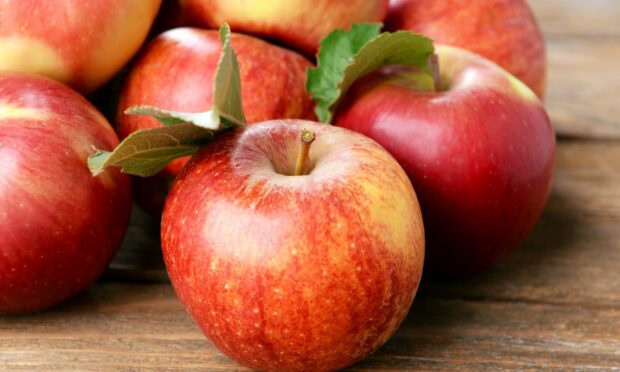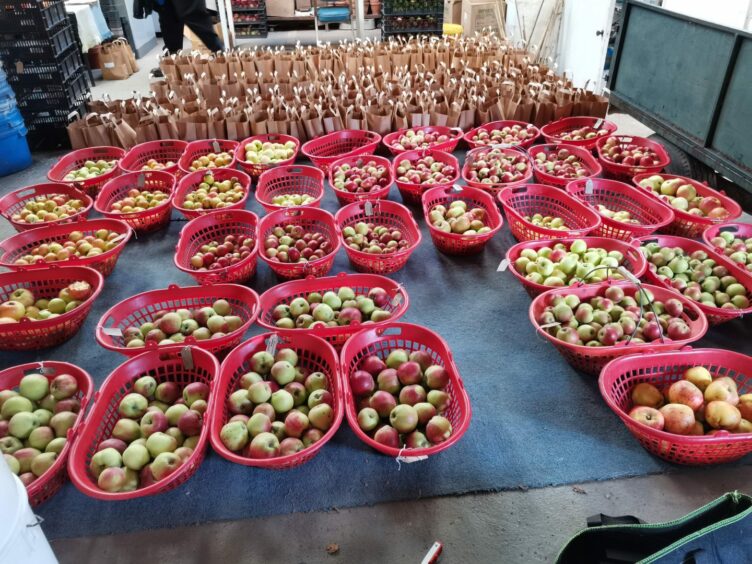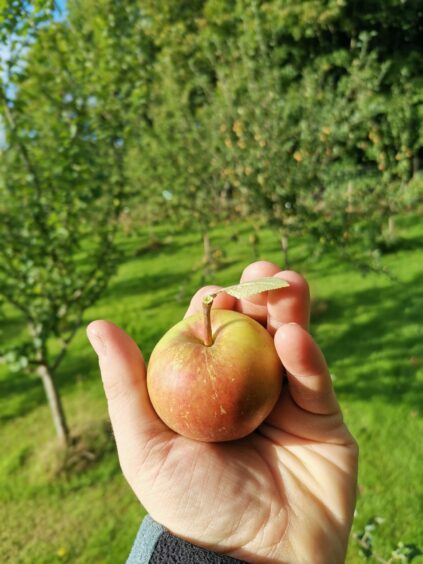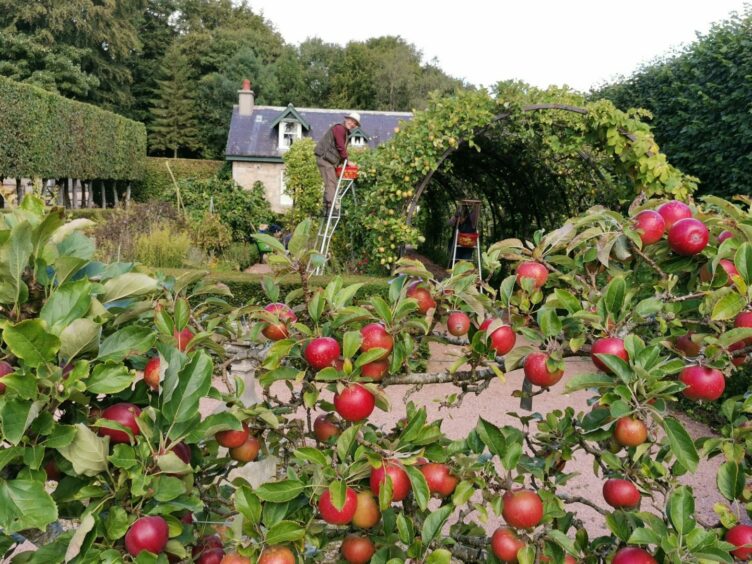The fresh morning bite in the air on the way to work at this time of year is always a stark reminder of the winter to come.
A sudden longing occurs for that sun-drenched glow of summer warmth, which was taken for granted over the last few months.
Even just last month felt a different time as the glorious September sun warmed my back picking the apples at Pitmedden Garden. There are a whopping 156 varieties, which is the largest individual collection across the National Trust for Scotland.
Getting picky
During our manic September, hardworking staff and volunteers ensure every apple and pear cultivar in the walled garden and orchards are picked into our soft, American diner-style red baskets, then taken to the work shed.
In there we have work stations set up with trestle tables clothed with soft towels so the apples don’t bruise when placed down.
Each station has weighing scales, a pen, a Pritt stick, a tally sheet, a bucket for the tearoom apples, a bucket for the juice apples, a bucket for the cider apples and a bucket for pig scraps.
All apples and pears are bagged at the stations in brown paper bags with 1kg of fruit put into each. These are graded 1st Class or 2nd Class then labelled with their cultivar name, date of origin, storage info and taste profile.
1st Class are perfect with no flaws, blemishes and a good stalk. 2nd Class are still perfectly usable but perhaps with a blemish or lesser quality stalk.
It is always with a tinge of sadness that the apple harvest begins because they look so fantastic lining the walls, arches, fences and hovering in the orchards; gleaming like red rubies and green emeralds on their carefully trained hosts.
Getting sticky
The Pritt stick is used to thoroughly secure labels going on to the bags as we’ve had previous years where a label has peeled off and I must confess without cutting some apples open to explore the internal makeup or simply biting in to taste the flavour, it’s hard to tell on the surface some types from others.
You can imagine the pain if this happens to hundreds of bags. How do you tell a Sunset from its parent Cox’s Orange Pippin without wasting lots of time?
Juice, jelly and cider
The remaining apples, unsuitable for either 1st Class or 2nd Class, go for juicing or jelly production at a local producer (then made available in the tearoom), and those too small for that instead go to The Wee Scottish Cider Company to make an award-winning, unique drink called Seidear, using the artisan cider-making method called keeving and the Méthode Champenoise.
This is where only apples are used to provide natural sweetness. No added sugar or water. It ferments in the bottle to provide the bubbles. It’s utterly delicious!
Apple Sunday
Any windfall apples on the ground or damaged ones get taken to the tearoom to be made into apple pies, crumbles, bakes, loafs and sweet treats for sale on Apple Sunday.
Apple Sunday is our event that occurs on the last Sunday of each September where we sell all the apples and bakes in a one-day-only fanfare of culminated September madness.
All our efforts throughout the year to look after the apples come to this moment.
Before long we are back to the winter prune, then the summer thin, the summer prune then the September pick again.
At least four major times per year we are round every tree giving it love care, attention and training.
In future articles, I’ll go into details about what this entails. In the end, though, it is entirely worth it as all the unique varieties are bursting with flavour and character unlike anything you buy in the supermarket.
What’s in a variety?
The varieties bring huge differing flavour profiles across a range from waxy, juicy, drier, aromatic, nutty, sweet, fresh and tart.
My personal favourites include Worcester Pearmain as a dessert apple for its juicy, sugary and strawberry tasting, pink-tinged flesh and shiny red skin.
It’s a real Snow White apple and great for kids.
Egremont Russet is another favourite for its unique drier russet, slightly nutty, liquorice-like tang.
For cooking I love the brilliantly named Peasgood Nonsuch as they are monstrously large in size, weighing up 500 grams each and can also be eaten fresh.
They make great apple pies, especially if combined with a more tart apple like Bramley’s Seedling or Flower of the Town.
If you’ve a spot of space why not try growing an apple tree of your own and see what the fuss is about?
Take care and happy gardening,
Scott





Conversation